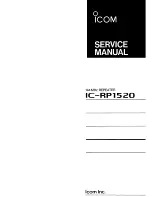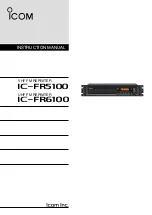
27
3. Put the repeater into Test Mode by turning on the repeater DIP Switch #4. When trying
to acquire stations, the repeater goes through the following process:
•It looks for a station signal for ten minutes, with the STAT LED flashing red when it
detects a signal not associated with a station during this time.
•It flashes yellow if it has found some stations but not all, and then;
•It flashes green when all stations are found. For each station found, the TX LED
flashes immediately after the STAT LED, indicating that it is transmitting the station
ID(s). See “Maintenance and Troubleshooting” on page 36 if the above LED pattern
does not display.
4. Turn repeater DIP switch #4 off once the test is complete, otherwise it will signifi-
cantly shorten battery life.
5. Close the repeater enclosure.
6. Select the second repeater in the chain (Repeater ID B) and put it in Test Mode. Also,
set it to receive any transmitter that is not already transmitting through repeater A. The
STAT LED displays the same light pattern during its acquisition phase as described
above.
Repeat the test process to verify communication for every repeater in the network.
Note: Each station that is transmitted through the repeater network must have its transmitter ID turned ON in
exactly one repeater. Its data automatically passes through each repeater in the chain to the receiver.
Use the following diagram to see the repeater and transmitter DIP switch positions in an
example combination network:
Repeater
Repeater
C
3
B
Repeater
1
A
2
1
4
5
4
3
2
1
5
Vantage Pro2
Console/Receiver
2
1
2
3
1
A
B
C
C
Transmitter DIP
Switch with
IDs 1, 2 ON
Repeater DIP
Switch set to ID A
Transmitter DIP Switch
with ID 3 ON
Repeater DIP
Switch set to ID B
Transmitter DIP
Switch with
IDs 4, 5 ON
Repeater DIP
Switch set to ID C
Vantage Pro2
Station
2
Vantage Pro2
Station
Vantage Pro2
Station
Vantage Pro2
Station
Vantage Pro2
Station
3
4
5
















































